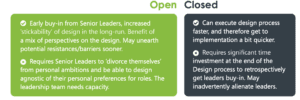We use cookies to help you navigate efficiently and perform certain functions. You will find detailed information about all cookies under each consent category below.
The cookies that are categorized as "Necessary" are stored on your browser as they are essential for enabling the basic functionalities of the site. ...
Necessary cookies are required to enable the basic features of this site, such as providing secure log-in or adjusting your consent preferences. These cookies do not store any personally identifiable data.
Functional cookies help perform certain functionalities like sharing the content of the website on social media platforms, collecting feedback, and other third-party features.
Analytical cookies are used to understand how visitors interact with the website. These cookies help provide information on metrics such as the number of visitors, bounce rate, traffic source, etc.
Performance cookies are used to understand and analyze the key performance indexes of the website which helps in delivering a better user experience for the visitors.
Advertisement cookies are used to provide visitors with customized advertisements based on the pages you visited previously and to analyze the effectiveness of the ad campaigns.
Other cookies are those that are being identified and have not been classified into any category as yet.

As a new leader, the initial months are crucial for long-term success. Whether inheriting an existing team or starting from scratch, be honest about the organisation’s challenges and seek diverse perspectives. Create a clear operating model, design a bold yet realistic leadership team, and prioritise continuous organisation design to ensure sustained progress towards strategic objectives.
Reading time: 3 minutes
You’ve finally landed the top spot. It’s time to put everything you know into practice, without breaking stride, and you know the first months are where you need to lay the foundations for long-term success in the future.
It’s a big task, and it’s complicated. Perhaps you have legacy teams, an inherited structure, perhaps individuals within your team who have been at the organisation significantly longer than you have. Perhaps you have a blank slate and can start from scratch. Whether you have been promoted from within your organisation, vs been hired externally, here’s some guidance to help you lay strong foundations to set you and your organisation up for success.
 INSIGHT: This is potentially easier if you have been recruited from within, as you’ll likely have an informed view of the nuts and bolts of the organisation. If you’re new to the organisation, getting to know what makes the organisation tick, who the players are, and understanding the root cause of the challenges takes a little longer.
INSIGHT: This is potentially easier if you have been recruited from within, as you’ll likely have an informed view of the nuts and bolts of the organisation. If you’re new to the organisation, getting to know what makes the organisation tick, who the players are, and understanding the root cause of the challenges takes a little longer.

ACTION: Seek different perspectives (from within and outside the organisation) that challenge your own thinking. Remember, those who shout the loudest don’t necessarily have the right answers.

INSIGHT: Be ruthless in your assessment of what exists (roles, teams etc) today, and carefully scrutinise whether or not those existing teams and roles get the organisation closer to your strategic objectives.

ACTION: Once you’ve got an operating model, design structural options based on the work – not on individuals or current roles.
A balance of having a clear vision, whilst also being open to alternate routes to getting there is key.

ACTION: Decide whether you run an open vs closed process, and to what degree you want to (or can) get your team involved in designing the new team.

 INSIGHT: By not taking time out to routinely review your organisation or function’s organisation design is that organisational issues quickly start to have a damaging impact on business performance and employee engagement.
INSIGHT: By not taking time out to routinely review your organisation or function’s organisation design is that organisational issues quickly start to have a damaging impact on business performance and employee engagement.

ACTION: To avoid stalemate, re-establish continuous organisation design as a way of being, and key to good organisational health. Carve out time quarterly to re-assess progress against your strategy, and on at least an annual basis, revisit your strategy in combination with your operating model and org design to make sure you’re leading in the right direction
Interested in this topic or want to get in touch? Visit our Organisation Development and Culture page to learn more.

